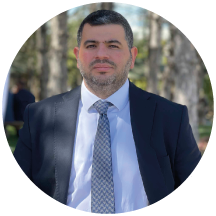What is Drying?
Textile products are taken to the drying process after finishing and washing.
Drying is used to remove the wet structure in the products.
In short, this is drying.
To remove the water on the fabric;
It is done for the purpose of lowering the taken liquor as soon as possible and fixing it in the product with heat to complete the process.
Drying Types
It is an expensive process to take away with the heat contained in the product.
Therefore, the possible side of the water should be removed mechanically.
The expensive drying process can thus be performed in a more economical way.
It is necessary to know in what situations the water on the product is present.
The application of the most efficient method is very important.
Water is found on products as follows:
dripping water
surface water
capillary juice
inflatable water
hygroscopic moisture, crystal water
What is Pre-Drying?
It is called pre-drying that the water in the product that can be taken by mechanical means can be taken away with less energy.
Pre-drying is done in three ways:
Squeezing, Centrifugation and removal by suction.
Heat Drying
Taking the water on the product with heat is called drying or main drying.
It is the most expensive step of the drying process.
High heat is required.
At this time, heat transfer occurs.
At this time, heat transfer takes place.
Heat transfer occurs in four physical ways.
Therefore, drying can be applied according to four principles;
garment drying, contact drying and high frequency (microwave) drying.
Garment Drying
This drying method is a drying method applied by the contact of hot drying gas to moist products.
During drying, two-sided heat and mass transfer occurs.
The fastest drying is provided in dryers where hot air is passed through the fabric.
Stenters (Gergefil Dryers)
They are the most expensive dryers.
It is the most preferred dryer because the width and length adjustment of the fabric of the product can be provided.
Length adjustment of the fabric can be made in stenters with needle carriers.
The fabric moves with the chain by being attached to these pins from both sides or held by the pegs.
Conveyor Belt and Air Cushion Dryers
In conveyor belt dryers, the fabric is carried inside the dryer on an endlessly perforated belt.
It is a tension-free tool since it is not necessary to pull the fabric transversely or longitudinally to move it.
Currently, such special vibrating conveyor dryers constitute the most preferred type of dryer for drying circular knit fabrics.
Hot-flue
It is the passing of the wet product to the heated rollers and at the same time the water is evaporated.
The most preferred dryer type in contact drying is the cylindrical (Bereken dryer) dryers.
Drying with IR (Infrared) Rays
The basis of drying by irradiation is the transfer of heat from the warmer to the colder one in the form of electromagnetic waves.
Rays that are longer than the wavelength that the eye can see are called IR (infrared) rays.
High Frequency Drying
It is a drying method based on the dipole formation of water molecules on the product passing between two capacitor plates connected to high frequency alternating current.
